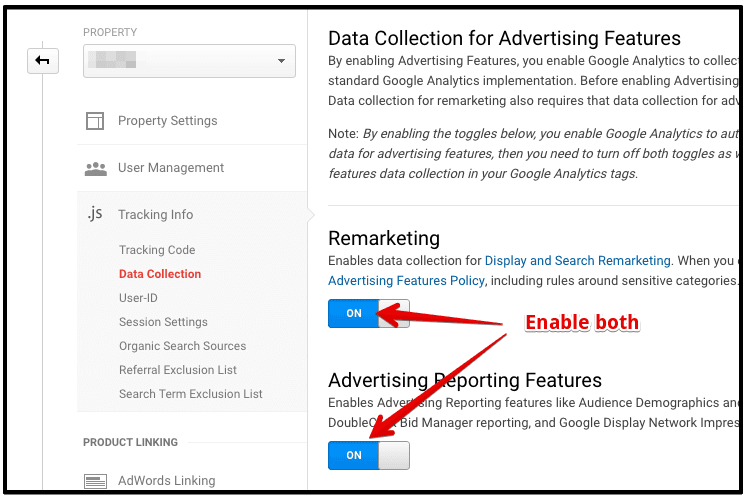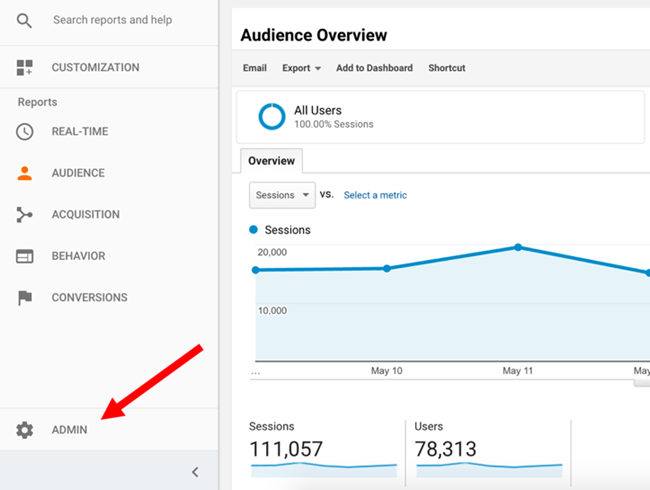Step-by-Step Tutorial: Remarketing In Google Analytics
Step-by-Step Tutorial: Remarketing In Google Analytics
Blog Article
Optimize Your ROI With Remarketing in Google Analytics
In the world of digital marketing, the use of remarketing strategies within Google Analytics has actually confirmed to be a potent device for enhancing roi. By harnessing the power of customer information and tailoring advertisements to certain audience segments, businesses can significantly amplify their conversion prices. The genuine essential lies in the art of precision - understanding individual behavior, crafting engaging advertisements, and continuously refining strategies to drive optimum results. The trip to taking full advantage of ROI through remarketing is a nuanced course led with insights and possibilities that can improve the trajectory of your marketing ventures.
Understanding Remarketing in Google Analytics
Comprehending remarketing in Google Analytics is necessary for maximizing your electronic advertising and marketing method. Remarketing enables you to target customers who have actually formerly seen your internet site or engaged with your application, providing them with tailored advertisements as they browse other websites or make use of other applications within the Google Show Network. This method helps maintain your brand name top of mind and encourages individuals to go back to your website, eventually increasing the likelihood of conversion.
By making use of Google Analytics, you can track the performance of your remarketing campaigns, gaining valuable understandings into user behavior, involvement, and conversions. This data enables you to fine-tune your targeting, bidding, and messaging techniques to boost the general efficiency of your projects.
Furthermore, comprehending the various types of remarketing listings available in Google Analytics, such as common, dynamic, and comparable target markets, permits you to produce individualized and extremely segmented campaigns customized to details customer sectors. This degree of granularity can considerably improve the relevance and influence of your remarketing initiatives, eventually maximizing your return on investment.
Establishing Up Remarketing Checklists
To properly carry out remarketing campaigns in Google Analytics, the initial action includes configuring and developing remarketing checklists targeting certain individual segments based upon their interactions with your internet site or app. By setting up remarketing checklists, you can customize your marketing initiatives to reach customers who have currently shown rate of interest in your services or items.
To begin, browse to the Admin section of your Google Analytics account and select the Residential or commercial property where you intend to produce the remarketing list. Under the Property column, click on 'Target market Definitions' and pick 'Audiences.' Next off, click on the red 'New Audience' button and choose 'Create New' to define the criteria for your remarketing checklist.

Crafting Efficient Remarketing Advertisements

When crafting your ads, focus on creating eye-catching headlines and compelling visuals that stand apart to potential clients. Include solid calls-to-action that motivate customers to revisit your website and complete a preferred activity. Make use of dynamic remarketing to reveal customized ads featuring service or products that users web link have actually formerly watched on your website.
Furthermore, make sure that your ads are mobile-friendly since a significant portion of internet traffic originates from smart phones. Examination different advertisement variants to identify which messages and designs drive the most effective results. By continuously refining and enhancing your remarketing ads based on performance information, you can maximize their effectiveness and boost your return on financial investment.
Analyzing Remarketing Performance

Via Google Analytics, online marketers can track the efficiency of their remarketing campaigns in real-time, permitting them to recognize patterns, patterns, and locations for improvement quickly. By analyzing the information, marketers can figure out which advertisements are doing well, which audience sections are responding positively, and which networks are driving one of the most conversions. This degree of granularity allows marketing experts to make data-driven decisions to optimize their remarketing campaigns for much better results.
Enhancing ROI With Remarketing
Examining remarketing information in Google Analytics makes it possible for marketing professionals to determine opportunities for optimizing return on financial investment (ROI) with tactical modifications - What Is “Remarketing” In Google Analytics?. To maximize ROI with remarketing, it is crucial to understand the habits of your target market. By assessing user interactions, such as the pages they went to, the items they watched, or the activities they tackled your site, you can customize your remarketing campaigns much more properly
Segmenting your target market based upon their behavior allows you to develop personalized and targeted ads that are most likely to resonate with them. By showing appropriate ads to certain segments of your audience, you can raise the opportunities of conversion and inevitably boost your ROI.
In addition, checking various advertisement creatives, messaging, and deals can assist recognize what reverberates finest with your audience. A/B screening permits you to trying out various components of your advertisements to visit their website identify what drives the greatest involvement and conversion rates.
Conclusion
Finally, maximizing ROI with remarketing in Google Analytics requires a strategic strategy to evaluating user habits, segmenting audiences, creating tailored ads, and maximizing project performance. By leveraging data-driven understandings and checking various methods, services can enhance their remarketing initiatives to drive greater involvement and conversion rates. This systematic technique guarantees that resources are successfully alloted in the direction of optimizing returns on investment in remarketing campaigns.
Next off, click on the red 'New Audience' switch and select 'Create New' to define the parameters for your remarketing list.
By continuously refining and enhancing your look at this site remarketing advertisements based on performance information, you can maximize their effectiveness and enhance your return on investment.
By diving right into these insights, online marketers can acquire a thorough understanding of exactly how their remarketing efforts are reverberating with their target audience and driving conversions. To optimize ROI with remarketing, it is essential to recognize the habits of your target market.In conclusion, taking full advantage of ROI with remarketing in Google Analytics requires a calculated strategy to evaluating individual habits, segmenting target markets, producing customized ads, and enhancing campaign efficiency.
Report this page